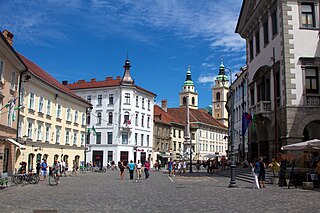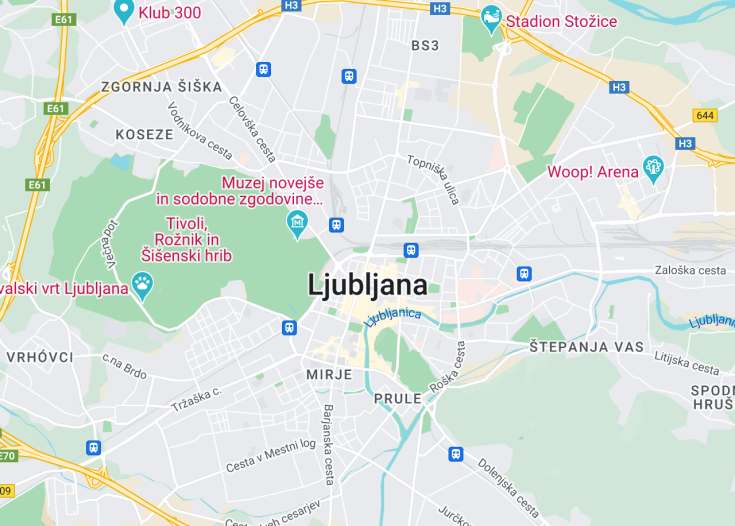Ljubljana, the enchanting capital of Slovenia, presents a delightful blend of historical charm and modern-day vibrancy. Nestled at the heart of the country, it boasts a picturesque old town dominated by a medieval castle, tranquil green spaces, and vibrant cultural scenes. The Ljubljanica River, with its romantic bridges and riverside cafes, adds to the city’s allure, making it a perfect destination for both cultural enthusiasts and leisure seekers. Officially a “Green Capital,” Ljubljana prides itself on its sustainable tourism practices and high quality of life.
Explore Ljubljana on foot or by bike to truly appreciate its charming streets and hidden squares. It’s the most intimate way to discover the city’s lively atmosphere.
Consider visiting Ljubljana in the spring or early autumn to enjoy mild weather and fewer crowds, enhancing your experience of the city’s abundant outdoor cafes and events.
Top things to do & see in Ljubljana
Select the following sights and activities to discover best tickets and tours available in Ljubljana.
Ljubljana: The Heart of Slovenia
| Country | Slovenia |
| Time in Ljubljana | GMT+2 |
| Language spoken | Slovenian |
| Population | 292,988 (Statistical Office of the Republic of Slovenia, 2021) |
| Currency | Euro (€, EUR) |
| Airports | Ljubljana Jože Pučnik Airport (12 mi / 19 km). |
Ljubljana is not only the capital but also the largest city of Slovenia, placing it at the cultural, educational, economic, political, and administrative heart of the country. The city pulsates with a youthful energy, innovative spirit, and a pace set by numerous festivals throughout the year. Despite its modern dynamism, Ljubljana has a quaint charm that resonates through its historic architecture, influenced largely by the works of the renowned architect Jože Plečnik.
The city’s origin dates back to Roman times when it was known as Emona. Today, it is admired for its beautiful bridge architecture and a vibrant street life. The Ljubljanica River flows through the center of town, featuring picturesque bridges and a series of cafés along the riverbanks, perfect for enjoying the passing views. Important landmarks include Ljubljana Castle, which stands on a hill above the city, Tivoli Park, and the central Preseren Square.
The balance between the extensive historical heritage and the modernity of a vibrant cosmopolitan city makes Ljubljana a place of constant surprise and hospitality, where East meets West. It retains a relaxed atmosphere, partly due to its relatively small size combined with the calm demeanor of its residents. This city is also known for its sustainability efforts; it was named Green Capital of Europe in 2016 by the European Commission.
Where is Ljubljana?
Ljubljana is centrally located in Slovenia, nestled between the Alps and the Adriatic Sea.
Distances:
| Route | Distance by car | Time by car |
|---|---|---|
| Zagreb to Ljubljana | 140 km | 1 hour 30 minutes |
| Vienna to Ljubljana | 380 km | 4 hours |
| Venice to Ljubljana | 242 km | 2 hours 45 minutes |
What is Ljubljana famous for?
Ljubljana is renowned for its rich history, vibrant cultural scene, and numerous festivals. The city is recognized worldwide for its environmental sustainability and pedestrian-friendly design.
History
Prehistoric to Roman Era
The area now known as Ljubljana has been inhabited since the Bronze Age, with the first known settlers belonging to the pile dwellers, who constructed wooden structures on stilts above the marshes. By the turn of the 1st millennium BC, the region was populated by the Illyrians and later the Celts, who founded the first known settlement at the site, named Emona. This settlement thrived under Roman rule after the Romans conquered it in the 1st century BC, developing into a pivotal military and trading post on the route to the Balkans.
Medieval Transformation
Following the decline of the Roman Empire, Ljubljana saw several invasions, which led to its rebirth in the medieval era. By the 12th century, Ljubljana received its town rights. It was during this period the area saw significant growth under the influence of the Bavarian and later the Hapsburg dynasties, reflecting its strategic importance in Central Europe. The construction of Ljubljana Castle, a medieval fortress, symbolizes this era’s significance.
Renaissance to 18th Century
Through the 15th to the 18th centuries, Ljubljana was a hub for the arts and culture, heavily influenced by the Renaissance and Baroque movements. The city was reshaped with new buildings and bridges in Baroque style, many of which still stand today. The University of Ljubljana was established in 1919, marking a significant leap in education and culture.
19th Century to World War II
Ljubljana underwent considerable change in the 19th century, with advancements in infrastructure such as the railway. It also saw a rise in nationalism which played a significant role during the World War periods. During World War II, Ljubljana was encircled by a barbed-wire fence by the Italian occupation, creating a physical and psychological divide in the city.
Post-World War II to Present
After World War II, Ljubljana became the capital of Slovenia, part of Yugoslavia. In 1991, Slovenia gained independence, and Ljubljana assumed a central role in the new nation’s development. Today, it is celebrated both for its historical heritage and its vibrant cultural scene, playing host to numerous international festivals and being recognized as a UNESCO City of Literature.**
Visit Ljubljana
What to see and do in Ljubljana
Exploring Ljubljana offers a delightful dive into its rich history and vibrant present. Key attractions include:
- Ljubljana Castle: Standing atop Castle Hill, this historic fortress offers panoramic views of the city and hosts various cultural events.
- Triple Bridge: An architectural marvel where three picturesque bridges span across the Ljubljanica River, right in the heart of the old town.
- Tivoli Park: Ljubljana’s largest and most beautiful park, ideal for nature lovers and those seeking a leisurely stroll or a picnic.
- Central Market: A bustling marketplace designed by the renowned architect Jože Plečnik, perfect for tasting local Slovenian products.
- Museum of Modern Art: For art enthusiasts, this museum houses a collection of modern Slovenian art, reflecting the rich cultural fabric of the region.
Exploring the city’s quaint cafes and vibrant nightlife is equally recommended.
Annual Events in Ljubljana
Ljubljana is lively with events throughout the year, ensuring that every season holds something special. Highlights include:
- Ljubljana Festival (Summer): A cultural spectacle with international music, ballet, and theatre performances.
- Dragon Carnival (February): Celebrating the city’s mythological protector with a grand parade and entertainment.
- Ljubljana Marathon (October): One of the biggest sporting events in the country, drawing runners from across the globe.
- December in Ljubljana: The city transforms into a winter wonderland with festive markets and lighting displays.
These events showcase the city’s vibrant culture and are spaced throughout the year.
Best time to visit Ljubljana
The best times to visit Ljubljana are late spring (May and June) and early fall (September and October). During these months, the weather is mild, and the city is less crowded, offering an ideal balance for exploring the outdoor sights and the various events.
Is Ljubljana worth visiting?
Indeed, Ljubljana is well worth a visit. This charming Slovenian capital, with its blend of vibrant cultural richness and historical significance, provides a unique, compact, and walkable urban experience. Its vibrant cafes, green spaces, and a calendar filled with cultural events make it an appealing destination for tourists seeking both relaxation and cultural enrichment.









